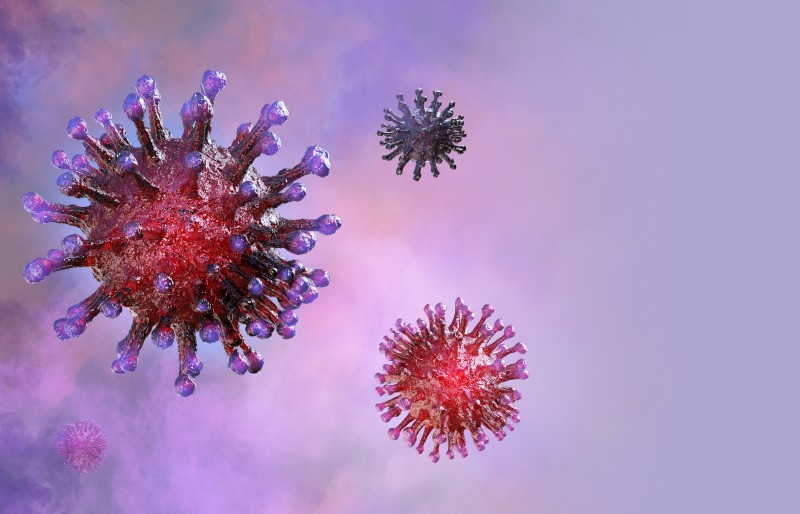Case Study: COVID-19 May Trigger MG, But Outcomes Can Be Good
Written by |

Corona Borealis Studio/Shutterstock
An elderly man in India developed generalized myasthenia gravis (MG) after contracting COVID-19, but his condition improved after he was given adequate treatment, a case report described.
This new case adds weight to eight other recent reports indicating that COVID-19 may trigger new-onset MG, with most cases occurring in men older than 50 with mild COVID-19 symptoms.
“In conclusion, MG is a rare postinfectious complication of COVID-19,” the researchers wrote.
The case report, “Temporal association between SARS-CoV-2 and new-onset myasthenia gravis: is it causal or coincidental?” was published in the journal BMJ Case Reports.
There have been some reports of neurological complications arising after a patient has had COVID-19. While the virus may result in a myasthenic crisis — worsening of muscle weakness typically resulting in respiratory failure — accounts of newly surged MG have been rarer.
Now, researchers reported the case of a 65-year-old man with diabetes and high blood pressure who experienced mild symptoms of COVID-19 in the first week of September 2020. The patient received supportive care and the anti-viral remdesivir, given intravenously, or via injection into a vein.
Six weeks (about one and a half months) after the onset of COVID-19, the man developed difficulty swallowing both liquids and solids — a condition known as dysphagia. This difficulty became worse in the two days following its onset.
A general examination was normal, but cranial nerve examination revealed the patient had muscle weakness in the face and throat. His voice also sounded nasal.
An MRI scan of the brain and spinal cord also was normal, but a nerve conduction study revealed that some nerves were unable to send electrical signals at the usual speed. That led doctors to suspect a mild sensory neuropathy, or minor damage to the peripheral nerves. Slow repetitive nerve stimulation tests revealed that the ability of nerves to send signals to nose and neck muscles also was decreased.
Some MG patients have a thymus — a gland between the lungs that makes white blood cells — that is too large or that has a tumor, called a thymoma. However, a computer tomography (CT) scan of the patient’s thorax revealed no alterations in his thymus.
Blood tests revealed the presence of antibodies against acetylcholine receptor (AchR), as well as against SARS-CoV-2, the virus that causes COVID-19. However, antibodies against muscle-specific kinase (MuSK) were considered to be absent. Of note, both anti-AchR and anti-MuSK antibodies are known causes of MG.
After excluding the possibility of a variant of Guillain-Barré syndrome, botulism, and nervous system disorders such as a stroke, clinicians diagnosed the man with AchR-positive, non-thymomatous, generalized MG. Of note, Guillain-Barré syndrome is a rare disorder in which the body’s immune system attacks nerves, causing muscle weakness, and botulism is a potentially life-threatening illness caused by exposure to a bacterial toxin that attacks nerves.
At his admission to the hospital, the patient’s MG composite score — a measure of the signs and symptoms of MG — was eight.
The patient was started on oral prednisolone (a glucocorticoid similar to prednisone), oral pyridostigmine, and into-the-vein neostigmine to improve swallowing.
About one week later, however, he developed weakness in his neck muscles and those controlling breathing, resulting in a myasthenic crisis that required the use of a ventilator to assist with breathing.
Pyridostigmine was stopped, prednisolone was increased, and into-the-vein immunoglobulin was given for five consecutive days. On day 10, he developed muscle weakness in the arms and his MG composite score increased to 33. Higher scores indicate worse disease.
At this point, physicians performed a tracheostomy — a procedure in which a small opening is created at the front of the neck so that a tube can be inserted to assist with breathing — to further support breathing.
After that, the patient’s overall condition started to improve. The tracheostomy tube was removed on day 21, or about three weeks after the man was first admitted to the hospital.
He was started on a soft diet via a nasogastric tube — a tube that carries food to the stomach through the nose — and discharged two days later. Two weeks later, his MG symptoms had eased.
Prednisolone was tapered over two months after discharge. At the time the case report was written, the patient was on the immunosuppressant azathioprine and pyridostigmine, and continued being followed as an outpatient.
After reviewing data of this and eight other similar cases published recently, the investigators found patients had a mean age of 55.8 years and developed MG within five to 56 days (almost two months) after contracting COVID-19. Five of these patients were men, five had generalized MG, four had bulbar and/or ocular symptoms (those involving the eyes, face, and neck), and seven had anti-AchR antibodies.
“All have improved with immunotherapy,” the researchers wrote.
Although many hypotheses might be put forward to explain a potential causal relationship between COVID-19 and MG, “it could as well be sheer coincidence,” they wrote.
“Long-term follow-up of these patients can give more insight into this unusual association,” they concluded.








Leave a comment
Fill in the required fields to post. Your email address will not be published.